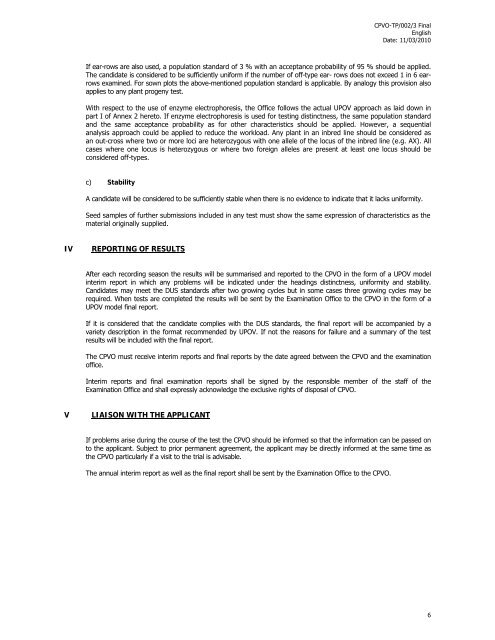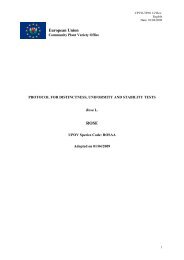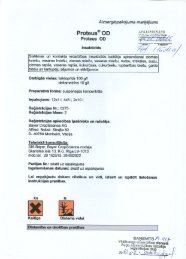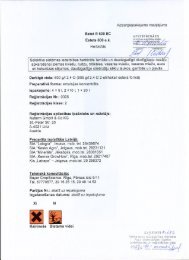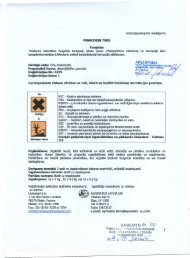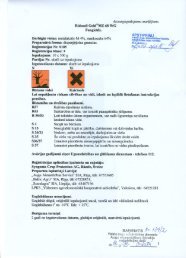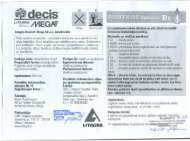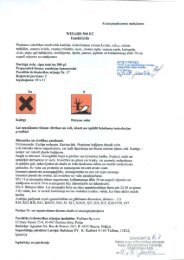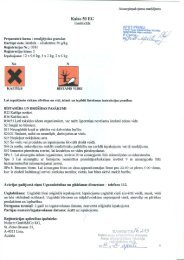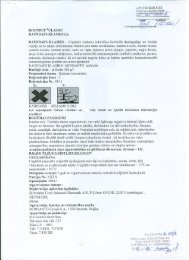Zea mays L. - VAAD
Zea mays L. - VAAD
Zea mays L. - VAAD
- No tags were found...
Create successful ePaper yourself
Turn your PDF publications into a flip-book with our unique Google optimized e-Paper software.
CPVO-TP/002/3 FinalEnglishDate: 11/03/2010If ear-rows are also used, a population standard of 3 % with an acceptance probability of 95 % should be applied.The candidate is considered to be sufficiently uniform if the number of off-type ear- rows does not exceed 1 in 6 earrowsexamined. For sown plots the above-mentioned population standard is applicable. By analogy this provision alsoapplies to any plant progeny test.With respect to the use of enzyme electrophoresis, the Office follows the actual UPOV approach as laid down inpart I of Annex 2 hereto. If enzyme electrophoresis is used for testing distinctness, the same population standardand the same acceptance probability as for other characteristics should be applied. However, a sequentialanalysis approach could be applied to reduce the workload. Any plant in an inbred line should be considered asan out-cross where two or more loci are heterozygous with one allele of the locus of the inbred line (e.g. AX). Allcases where one locus is heterozygous or where two foreign alleles are present at least one locus should beconsidered off-types.c) StabilityA candidate will be considered to be sufficiently stable when there is no evidence to indicate that it lacks uniformity.Seed samples of further submissions included in any test must show the same expression of characteristics as thematerial originally supplied.IVREPORTING OF RESULTSAfter each recording season the results will be summarised and reported to the CPVO in the form of a UPOV modelinterim report in which any problems will be indicated under the headings distinctness, uniformity and stability.Candidates may meet the DUS standards after two growing cycles but in some cases three growing cycles may berequired. When tests are completed the results will be sent by the Examination Office to the CPVO in the form of aUPOV model final report.If it is considered that the candidate complies with the DUS standards, the final report will be accompanied by avariety description in the format recommended by UPOV. If not the reasons for failure and a summary of the testresults will be included with the final report.The CPVO must receive interim reports and final reports by the date agreed between the CPVO and the examinationoffice.Interim reports and final examination reports shall be signed by the responsible member of the staff of theExamination Office and shall expressly acknowledge the exclusive rights of disposal of CPVO.VLIAISON WITH THE APPLICANTIf problems arise during the course of the test the CPVO should be informed so that the information can be passed onto the applicant. Subject to prior permanent agreement, the applicant may be directly informed at the same time asthe CPVO particularly if a visit to the trial is advisable.The annual interim report as well as the final report shall be sent by the Examination Office to the CPVO.6


